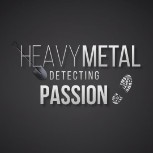Jewelry Hunting Parks - Target Recovery
-
Similar Content
-
- 2 replies
- 8,249 views
-
- 3 replies
- 367 views
-
- 4 replies
- 432 views
-
- 13 replies
- 1,040 views
-
- 3 replies
- 1,049 views
-
- 6 replies
- 1,961 views
-
-


.thumb.jpg.95344db3aeef0a4c6c73420daa366191.jpg)





Recommended Posts
Create an account or sign in to comment
You need to be a member in order to leave a comment
Create an account
Sign up for a new account in our community. It's easy!
Register a new accountSign in
Already have an account? Sign in here.
Sign In Now